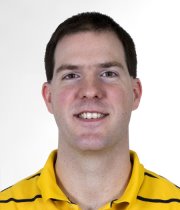 Dr. Bill McGovern is a Scientist at Lake Shore. He received his BS in Chemistry and Engineering Physics from Hope College, and his MS and PhD in Analytical Chemistry from The Ohio State University. He started at Lake Shore in 2005.
Dr. Bill McGovern is a Scientist at Lake Shore. He received his BS in Chemistry and Engineering Physics from Hope College, and his MS and PhD in Analytical Chemistry from The Ohio State University. He started at Lake Shore in 2005.
Q: What was the process you went through at Lake Shore to develop the Optical Filters product line?
A: The initial research effort began in 1999, before I joined the company. Dr. Philip Swinehart, Sensors Research and Development Vice President, was looking to expand Lake Shore’s product line into optical-based sensors. Dr. Vladimir Kochergin started working on porous silicon and optical filters in 2001. A number of NASA SBIR grants set up the necessary equipment and funded experimental work for further efforts in this area. When I joined, I pushed the development effort to long-pass and band-pass filters that Lake Shore now offers. I’ve been involved with these products from the beginning, producing the first prototypes - all the way to bringing the filters to the market. We are currently expanding this product line by developing multilayer band-pass filters, which are a new, upcoming technology.
Q: Please describe your primary job responsibilities at Lake Shore.
A: In addition to managing the Optical Filters line, like many engineers at Lake Shore I also work closely with our customers. I spend part of my time advising and guiding customers who call or e-mail about optical filter products. If a customer wants a specific or customized product I work with them to find out more about their application and try to determine what we can do to help them. I work closely with NASA, MDA and various military branches to determine how we can develop products to best suit their needs.
Q: What achievements are you most proud of during your time at Lake Shore?
A: I’m very proud of the long-pass filters and cross-absent metal mesh filters that I’ve developed into saleable products during my tenure at Lake Shore. My team is also developing polymer-supported band-pass filters for NASA and other astronomy applications, and it’s gratifying to see the work that we do and the products that we make help solve tough scientific problems.
One of the things I really like about working at Lake Shore is that it’s very customer-focused, and we are always encouraged to talk with the customers, find out what problems they are experiencing, and then work with them to develop a solution. New technology takes a significant amount of effort to push through the preliminary research, to prototypes, and on to full-scale production, but ultimately our goal is to get the product into customers’ hands so that their feedback can help us create tomorrow’s products.
Q: What projects or initiatives are you currently working on at Lake Shore?
A: The largest project I am currently involved in is a two-year NASA grant to make multilayer filters for atmospheric and infrared astronomy. Computing power has advanced significantly over the past decade, so we are able to achieve much more with our in-house optical modeling software; allowing us to make significant strides with very wide band-pass filters. We have recently developed filters with a spectral window from 100-300 microns, 300-1000 microns, and many others in-between.
Q: What developments are you observing with regards to optical filters for astronomy and physics research applications, and what do you expect to see in the coming years?
A: At Lake Shore, we are developing custom filters for some very interesting applications. Many of these filters are used in astronomy research efforts, including projects like the SOFIA Infrared Observatory, a converted 747SP that flies above the majority of the water vapor in the lower atmosphere. Astronomy researchers are using infrared spectroscopy to reach out to parts the galaxy that can’t be observed in the traditional visible light spectrum. Astronomers need to remove out-of-band radiation that can saturate the sensitive detectors used; band-pass and long-pass filters allow them to select different infrared regions, to see different components of what’s happening within the galaxy they are looking at.
Our customers have also been expressing a lot of interest in the Terahertz region of the spectrum recently, which can be used for homeland security applications, including threat-detection (chemical, biological, radiation). People are trying a lot of new things in this spectral region to find better detection technologies, so this is an exciting area that I expect to see growth in.
